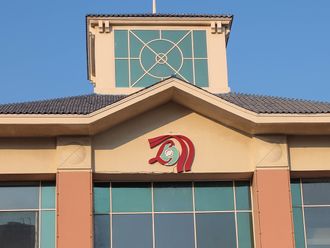Mumbai : The sun has come out again over Indian shares as the spotlight shifted from a bunch of scandals to fundamental factors such as robust economic growth and booming prospects for corporate earnings.
The $1.3-trillion economy, Asia's third-largest after China and Japan, expanded 8.9 per cent in the September quarter — quicker than what economists had predicted. The data released last week put the nation on course to top nine per cent growth for the financial year that ends next March.
In comparison, economic expansion in the 16-nation euro region was 1.9 per cent in the last quarter and 2.5 per cent in the United States, while growth in the China slowed to 9.6 per cent.
"Money will flow to where there are better returns; and it's clear India will be a destination for this reason," said equity trader Hasmukh Gandhi.
"If not for the scams, the Sensex would have scaled new highs," he said. "The outlook is clearly bullish."
Foreign portfolio investments in Indian equities are set to top a record $30 billion in 2010, a more than two-third jump from the previous year, and allocations for the new year should pick up.
The top-30 Sensex climbed 4.3 per cent last week to just below 20,000, after having tumbled almost 11 per cent from a November 5 high.
The recovery was also spurred by a jump in the manufacturing sector, with the HSBC Market Purchasing Managers' Index rising to a six-month high in November. The reading of 58.4, based on a survey of 500 companies, was the 20th successive month that it remained above 50, the level marking growth from contraction.
"The momentum in manufacturing picked up further in November. Output accelerated and growing order books point to a continued strong momentum in the months ahead," Leif Eskesen, chief economist for India and Asean at HSBC, said in a statement.
The services PMI galloped to a four-month high in November and Eskesen said businesses were more optimistic.
Policy outlook
The central bank is unlikely to tighten policy at its scheduled policy on December 16, with a cash crunch with banks already hitting loan growth and inflation pressures easing.
Morgan Stanley has forecast India will add 136 million workers, more than the population of Japan, by 2020 compared with 23 million for China. The massive addition of a productive workforce would boost savings and help fund large infrastructure projects.
The problems that could rise from soaring domestic consumption demand were large imports, which could put pressure on balance of payments, Goldman Sachs said. In such a scenario, any reversal in inflows would cause havoc.
"The key risk to the economy is of a boom-bust cycle reminiscent of emerging markets in 1980s and 1990s," Goldman analyst Tushar Poddar said in a report.
The writer is a journalist based in India.












